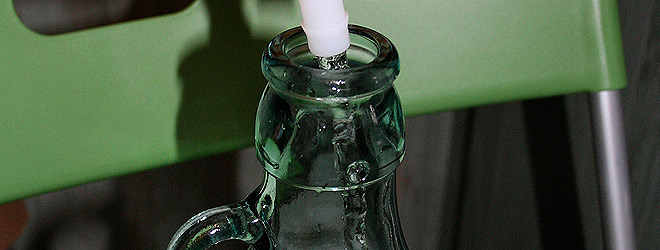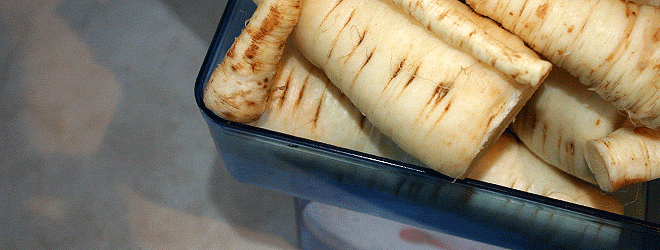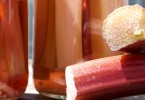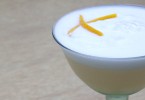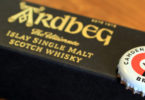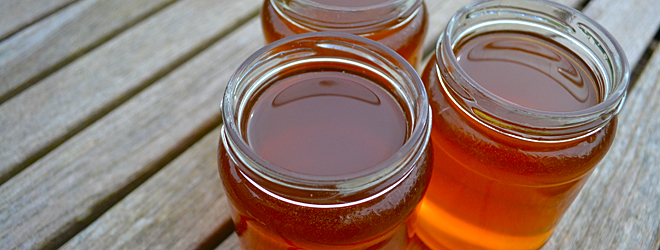Racking off the rhubarb wine
Making wine is essentially a very simple art. Things only get complicated if you’re attempting to fine-tune your booze to a particular perfection, or if you get something wrong. When I started our rhubarb wine a few months ago I was keen to see how successful a brew I could make using the most basic recipe and methods – the minimum of amount of ingredients, no messing with sulphates, and no dabbling with the dark arts of the hydrometer. We’ll begin to explore these with subsequent wines, but this rhubarb wine is going to be pure. A wine control in our journey of alcoholic experimentation.
And so far so good.
After a few months of merrily bubbling away the liquid is already remarkably clear and fermentation appears to have ceased. The next stage, racking off, is simply the transferring of liquid from one vessel to another, leaving the worn out yeast and microscopic bits of rhubarb behind (also known as the ‘lees’). This process should also re-invigorate any live yeast remaining, which will set to work on any unfermented sugar.
How to rack off homemade wine
Racking off involves placing your full demijohn on a surface higher than an empty demijohn and letting gravity do its work, by way of a plastic tube. Dangle the end of the tube just above the sediment and get the flow started by sucking the other end. It’s then a game of chicken to see how much wine you dare to transfer before sucking through the unwanted lees (getting some muck transferred is inevitable and you would usually expect to rack off a few times before bottling). Our crude tube has a tap on the end of it which helps control flow – especially useful for putting a dribble of liquid into a glass for tasting purposes, which helps with the next stage…
Topping up
If you’re leaving a layer of sediment behind then it’s pretty obvious that there will be a shortfall of liquid in the new demijohn. It’s better to limit the amount of oxygen meddling with the wine so this shortfall should ideally be topped up. There are a few options for this task, outlined below…
• Small shortfalls can simply be added to with boiled water that has been allowed to cool.
• If you have a larger shortfall, are happy with the flavour and want to keep your wine pure, then a good trick is to fill the volume with clean glass marbles.
• You can also top up with another wine or grape juice. But bear in mind this will subtly alter the flavour. And, in some circles, would be considered cheating.
• If fermentation hasn’t finished then you can make a sugar syrup with roughly three parts water to one part sugar, which will steadily convert back to alcohol.
My rhubarb wine seems to have a good strong flavour so I’m not too bothered about a slight diluting effect of water. It’s also quite dry so I’ve added a touch of sugar syrup – and as I’m pretty sure there is no more yeast active this will simply make the wine a tad sweeter, which I tend to like for fruit wines as it can help enhance the natural rhubarb flavour.
Another airlock is fitted and I’ll let it settle again for a few weeks. Providing there is no more fermentation I’ll get it into bottles when I’m sure it has fully cleared.
As ever, all equipment must be cleaned and sterilised before use. And as your tube-sucking lips are a vital piece of equipment, they should ideally be sterilised too – a swig of whisky being the best method going.


